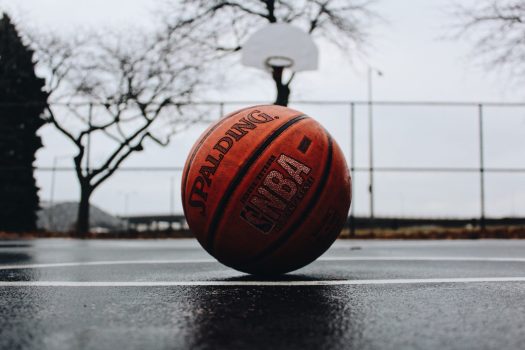The following are new rules and points of emphasis for the 2023-2024 season:
2-1-3 NOTE (NEW) — As a result of the increased use of large video boards that allow timers to utilize tablets to control the clock from anywhere in the facility and the increase in schools utilizing the shot clock, it became necessary to include language requiring the shot clock operator, if used, to sit at the scorer’s and timer’s table. Officials need to have easy access to the scorer, timer and the shot clock operator during contests.
3-4-5 — Clarifying the requirements for uniform bottoms makes it easier for coaches and athletic directors to address the individual needs of their student-athletes when ordering uniforms. Teammates must all wear like-colored uniform bottoms but may wear multiple styles. This clarification allows for an athlete to wear a skirt or pants of the same color as the athlete’s teammates without contacting the state association for a uniform accommodation.
3-5-6 — Allowing undershirts worn under visiting team jerseys to be black or the single solid color similar to the torso of the jersey will assist schools with hard to match colors easily comply with the rules. Schools can now allow teammates to wear black undershirts and avoid searching for solid shirts that match the visiting team jersey. It is important to note that all teammates wearing undershirts must wear the same solid color.
4-8-1 — Eliminating the one-and-one, shooting two free throws after a team’s fifth foul in a quarter and resetting the fouls after each quarter has the potential to provide a better flow by allowing teams that run into early foul trouble the opportunity to self-correct their style of play at the outset of both the second and fourth quarters. Second, by eliminating the one-and-one, the number of opportunities for correctable errors that result from awarding an unmerited free throw or failing to award a merited free throw are significantly reduced. Finally, the guarantee of two free throws eliminates the physical play that has often been associated with rebounding action on the first free throw.
4-36, 6-4-3, 7-5-2 thru 4, 9-1 PENALTY 3, 9-4 PENALTY, 9-5 PENALTY, 9-6 PENALTY, 9-8 PENALTY, 9-9 PENALTY, 9-12 PENALTIES 3 & 4, 9-13 PENALTY — Establishing four throw-in spots (the nearest 28-foot mark along each sideline or the nearest spot 3-feet outside the lane line on the end line) when a team gains or retains possession in its frontcourt due to a violation, a common foul prior to the bonus or any stoppage other than an out-of-bounds eliminates much of the judgment for an official about where exactly the throw-in spot should be located and allows teams to develop throw-in plays both offensively and defensively from four pre-determined locations.
7-6-6 — Allowing the official administering a throw-in to the wrong team to correct the mistake before the first dead ball after the ball becomes live unless there is a change of possession provides an appropriate amount of time to correct a mistake. Previously, the mistake had to be corrected before the ball was put into play.
9-3-3 — Establishing that a player may step out of bounds without penalty unless they are the first player to touch the ball after returning to the court or if they left the court to avoid a violation allows the game to continue without stoppage when the player’s actions did not create an advantage. When an advantage is gained by a player purposely leaving the court and being the first one to touch the ball or leaving the court to avoid a violation, an advantage is gained, and a violation has occurred.
